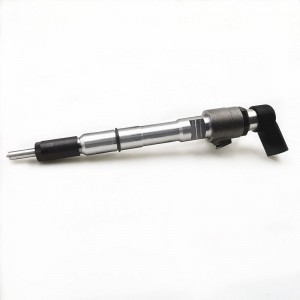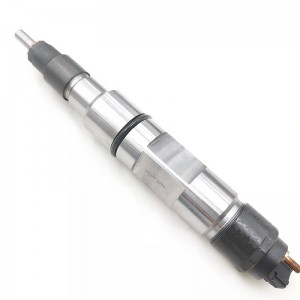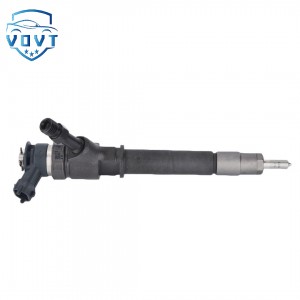Professional Manufacture 0 414 701 070 Diesel Injector Common Rail Injector Engine Parts Vehicle Parts 0414701070
products description
| Reference. Codes | 0 414 701 070 |
| Application | / |
| MOQ | 4PCS |
| Certification | ISO9001 |
| Place of Origin | China |
| Packaging | Neutral packing |
| Quality Control | 100% tested before shipment |
| Lead time | 7~10 working days |
| Payment | T/T, L/C, Paypal, Western Union, MoneyGram or as your requirement |
Injector fuel injection system
The fuel injection system of the injector is a vital component of modern automobile engines. It is mainly composed of the fuel supply system, electronic control system and injector. The following is its relevant information:
Composition and principle
Fuel supply system: generally composed of fuel tank, fuel pump, fuel filter, fuel pressure regulator, etc. The fuel pump sucks the fuel from the fuel tank, filters the impurities through the fuel filter, and delivers it to the injector at a certain pressure. The fuel pressure regulator is responsible for maintaining the stability of the fuel system pressure to ensure that the fuel can be supplied to the injector at a suitable pressure.
Electronic control system: The core components include the engine control unit (ECU), various sensors, etc. The sensor is responsible for monitoring various operating parameters of the engine, such as air flow, engine speed, water temperature, intake temperature, etc., and transmits these signals to the ECU. The ECU analyzes and processes these signals according to the pre-set program and algorithm, calculates the best injection time and injection amount, and then sends control instructions to the injector.
Injector: It is the actuator of the fuel injection system, usually composed of a solenoid coil, an armature, a needle valve, etc. When the ECU sends out a fuel injection signal, the electromagnetic coil is energized to generate a magnetic field, attracting the armature to drive the needle valve to open, and the fuel is sprayed into the engine intake manifold or combustion chamber through the injector nozzle under pressure. Factors such as the number, diameter and shape of the injector nozzles will affect the fuel injection effect and atomization quality.
Type
Classified by injection position: It can be divided into intake manifold injection system and direct injection system. The intake manifold injection system sprays the fuel into the intake manifold, mixes with the air in the intake manifold and then enters the combustion chamber; the direct injection system directly sprays the fuel into the engine combustion chamber, so that the fuel and air are mixed in the combustion chamber. This method can more accurately control the fuel injection amount and injection time, improve fuel utilization and engine performance.
Classified by injection method: It can be divided into continuous injection system and intermittent injection system. In the continuous injection system, fuel is continuously injected during the operation of the engine. This system has a simple structure, but the fuel injection accuracy is relatively low; the intermittent injection system injects fuel at a specific time according to the working cycle of the engine, which can be further divided into single-point injection, multi-point injection, etc., which can more accurately control fuel injection and improve the engine's power, economy and emission performance.
Advantages
Accurate control of fuel injection: It can accurately control the fuel injection amount and injection time according to different working conditions of the engine, such as idling, acceleration, deceleration, full load, etc., so that the engine can maintain the best air-fuel ratio under various working conditions, thereby improving the engine's power performance, fuel economy and emission performance.
Improve fuel atomization effect: By reasonably designing the parameters such as the shape, number and injection pressure of the injector's spray hole, the fuel can be better atomized and fully mixed with the air to form a uniform combustible mixture, which is conducive to improving combustion efficiency, reducing carbon deposits, and reducing pollutant emissions.
Improve engine response speed: The electronic control system can quickly respond to changes in engine operating conditions, adjust the fuel injection amount and injection time in time, so that the engine can quickly adapt to the driver's operating needs, and improve the vehicle's acceleration performance and driving comfort.
Development trend
Higher injection pressure: In order to further improve the fuel atomization effect and combustion efficiency, the future fuel injection system will develop in the direction of higher injection pressure. Higher injection pressure can make the fuel spray finer and more uniform, and mix more fully with the air, thereby improving the thermal efficiency of the engine and reducing fuel consumption and pollutant emissions.
More precise control technology: With the continuous advancement of electronic technology and sensor technology, the control of the fuel injection system will be more precise. The future ECU will have more powerful computing power and more complex control algorithms, which can monitor and adjust various engine parameters in real time and realize refined control of fuel injection.
Integration with other technologies: The fuel injection system will be deeply integrated with other engine technologies, such as turbocharging, variable valve timing, hybrid power, etc., to form a more efficient and intelligent power system.
Related products
| 1 | 5WS40200 | 11 | A2C59514909/ | 21 | 31336585 |
| 2 | FA2C53252642 | 12 | A2C59511602 | 22 | 36001726 |
| 3 | 1685796 | 13 | A2C59513556 | 23 | 1709667 |
| 4 | 31303994 | 14 | 5ws40677 | 24 | 36001727 |
| 5 | 50274V05 | 15 | 50274V0 | 25 | 9445R |
| 6 | 5WS40087 | 16 | 5WS40677 | 26 | 00Q1T |
| 7 | 16600-00Q1T | 17 | AV6Q9F593-AB | 27 | 5WS40007 |
| 8 | 00Q0H | 18 | AV6Q9F593-AA | 28 | A2C59513997 |
| 9 | 5WS40148-Z | 19 | A2C59511606 | 29 | 5WS40250 |
| 10 | 2S6Q-9F593-AB | 20 | 16600-00Q0P | 30 | A2C59514912 |

























